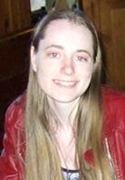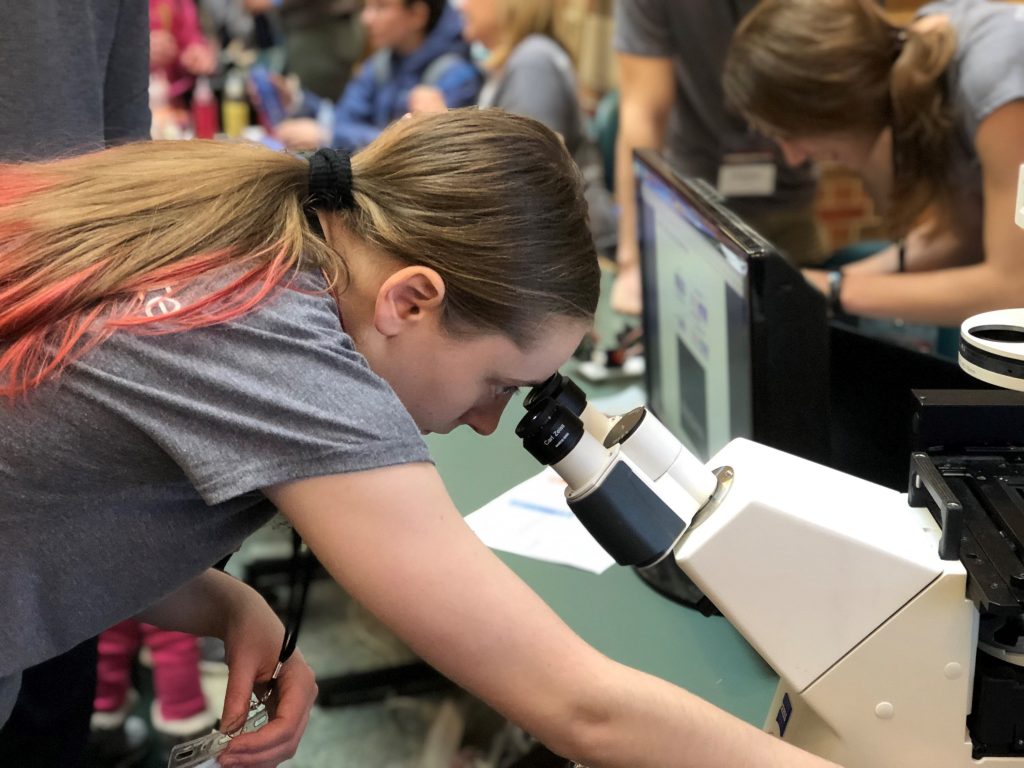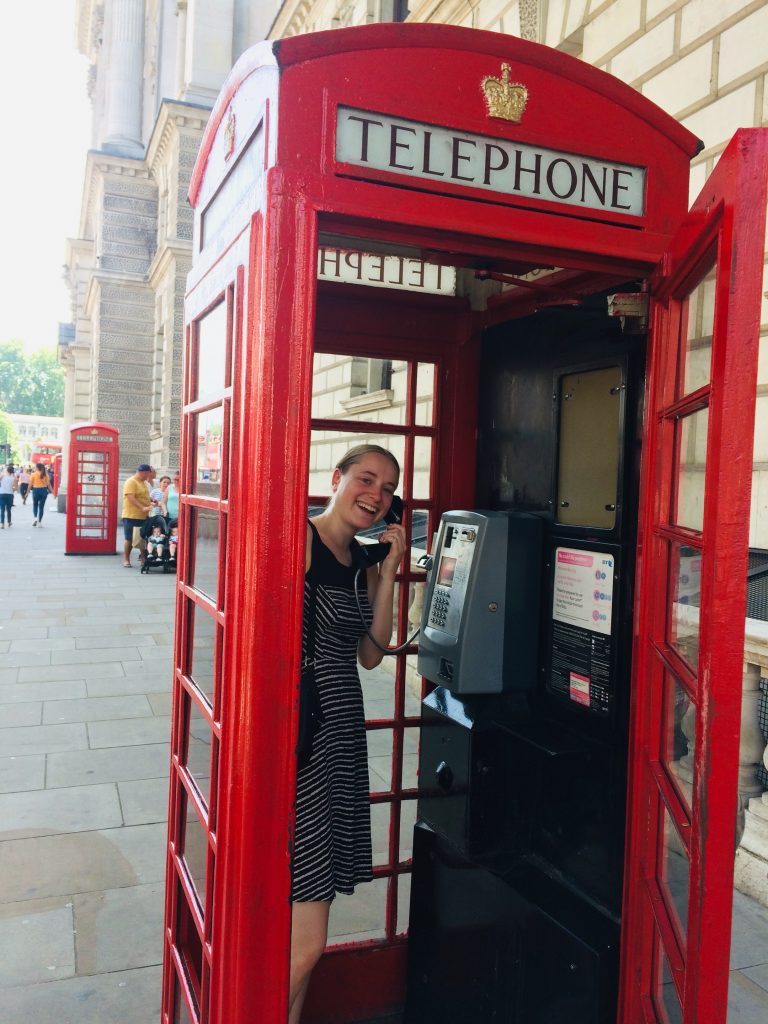 One of our first cohort of trainees, Amanda Weiss joined the program as a first-year graduate student January 1, 2018 and is expected to graduate in 2022. She completed her undergraduate degree in neuroscience at Muhlenberg College and is the first in her family to attend college. She worked for two years as a research specialist in Hee Jung Chung’s lab before applying to graduate school. As is typical for the School of Molecular & Cellular umbrella graduate program, Amanda rotated in three labs during her first fall semester. She then selected the molecular and integrative physiology graduate program for her PhD specialization, working under the advisement of Martha Gillette and Hyunjoon Kong. Her research topics are the impacts of muscle co-culture on neurosphere development, neurogenesis in hydrogels, and redox properties of neurons.
One of our first cohort of trainees, Amanda Weiss joined the program as a first-year graduate student January 1, 2018 and is expected to graduate in 2022. She completed her undergraduate degree in neuroscience at Muhlenberg College and is the first in her family to attend college. She worked for two years as a research specialist in Hee Jung Chung’s lab before applying to graduate school. As is typical for the School of Molecular & Cellular umbrella graduate program, Amanda rotated in three labs during her first fall semester. She then selected the molecular and integrative physiology graduate program for her PhD specialization, working under the advisement of Martha Gillette and Hyunjoon Kong. Her research topics are the impacts of muscle co-culture on neurosphere development, neurogenesis in hydrogels, and redox properties of neurons.
Weiss has presented her research on these topics at the Society for Neuroscience Conference (2019), the Pittsburgh Conference on Analytical Chemistry and Applied Spectroscopy (2020), the MBM Retreat (2018, 2019, & 2020), the Research Live! Competition in the Illinois Graduate College (2018), the Illinois Neuroscience Program Open House (2019), the Illinois Molecular and Integrative Physiology Graduate Seminar (2019), the Illinois Molecular and Integrative Physiology Retreat (2019), the Neuroscience Open House (2020), and the EBICS Research Webinar: Fun Things with Brain Organoids (2020). She presented a poster with Shannon Murphy at the October 2019 Society for Neuroscience conference. Her presentation on “Morphological and chemical characterization of the effects of muscle on motor neurospheres” won an award for Best Lightning Talk at the 2019 MBM Retreat.

Weiss has participated in other trainee activities such as the Kickoff meeting, Summer Journal Club readings/discussion meetings, Frontiers in Miniature Brain Machinery lectures, and the 2018 MBM Retreat. Weiss served as a representative on the Student Leadership Council from 2018 to 2019. As part of her work on the council, she co-organized the MBM booth for the Beckman Open House March 8, 2019, in which MBM trainees shared their research with the larger university and Champaign-Urbana communities, and introduced many young children to brain science. She has also mentored an REU student. In June 2020, she led a project for trainees to write a statement for the MBM Program on diversity and equity. In November 2020, she participated in a panel discussion between MBM trainees and engineering students at Urbana High School on college prep and pursuing a PhD.

In June and July 2019, Weiss traveled to the University of Birmingham in the United Kingdom to study neuron extensions with Dr. Liam Grover. This experience counted toward the MBM Program’s initiative to introduce trainees to international research through travel to our partner institutions.
Weiss has completed six semesters of the Special Topics in MBM course, plus coursework in stem cell bioengineering, developmental biology, stem cells and regenerative medicine, research ethics and responsibilities, seminars in physiology, biology of neurons and glia, cell and membrane physiology, biochemical and physical basis of life, integrative neuroscience, systems and integrative physiology, current issues: neurons and glia, frontiers in physiology, advanced biochemistry, and advanced molecular genetics. In August 2018, she participated in the EBICS Engineering Cellular Systems Summer School.

Research Highlights (in her own words):
I have cultured motor neurospheres and demonstrated that at 16 Days in Vitro (DIV), they express neurons and astrocytes. Moreover, they demonstrated a greater portion of astrocytes than spinal cord explants at Postnatal Day 7. I showed that the 55 DIV neurospheres express a motor neuron for myelin and that spinal cord explants removed from mice at Postnatal day 7 display similar morphology. I also demonstrated that at 2 months, the neurospheres express low levels of the astrocyte marker ALDH1L1 but that myelin sheaths are present. I also conducted imaging for the neurospheres depicting the whole neurospheres and their tendency to fuse together, as well as immunostaining for the motor neuron enzyme Choline Acetyltransferase.
I provided DIV 16 and DIV 55 neurospheres to Shannon Murphy in the Sweedler lab for Capillary Electrophoresis-Mass Spectrometry (CE-MS). This was a novel use of CE-MS, and glutamate was successfully detected at 55 DIV. I also extracted rat spinal cords for CE-MS. They demonstrated greater expression of acetylcholine, GABA, aspartic acid, and glutamate at Postnatal Day 7 compared with Postnatal Day 0.

In Dr. Grover’s lab at the University of Birmingham, I cultured retinal ganglion cells in a fluid gel that is being developed as an eye drop. I demonstrated that they displayed arborization under several conditions with the gel. However, the cells cultured without the gel displayed greater overall health.
Using CLARITY, I successfully cleared whole brains, brain slices, spinal cord explants, embryoid bodies, and neurospheres. I optimized my immunostaining after CLARITY for beta-3 tubulin to detect neurons and synaptophysin to detect synapses.

